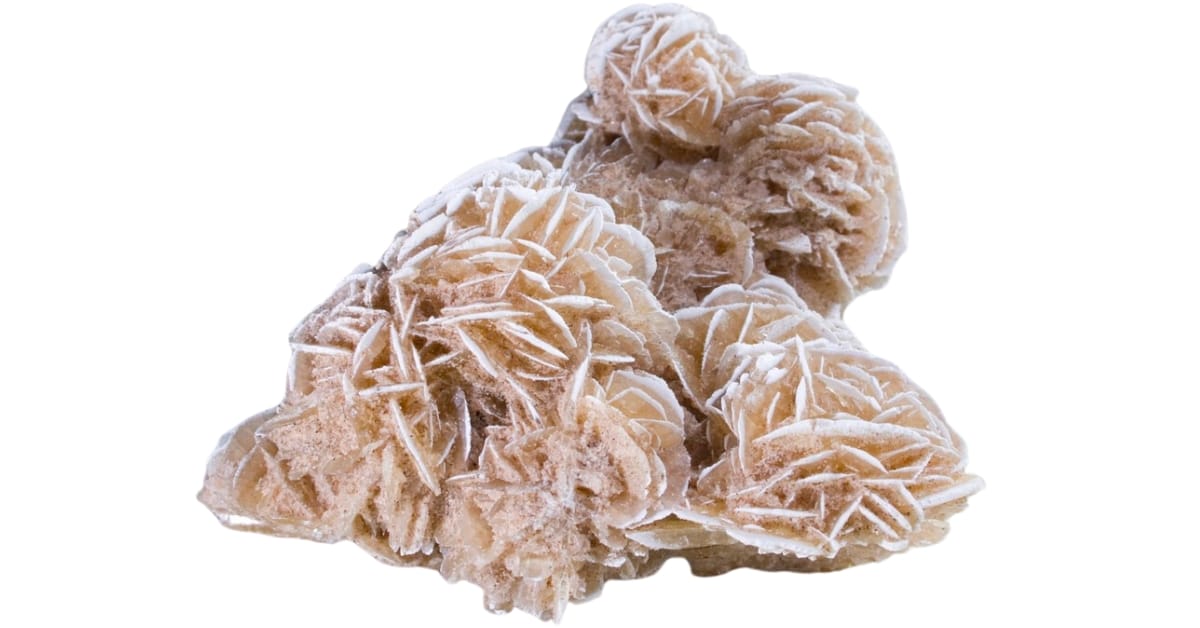Gypsum is a mineral so versatile that it can look like glass, feel like silk, or even blossom in the desert like a flower. Interestingly, it’s even found on Mars! Made from calcium sulfate and water, what gypsum looks like can vary a lot.
Sometimes it’s clear and shiny like a crystal window, while other times, it can be smooth and white, perfect for carving into beautiful sculptures. It can grow from evaporating seawater or appear in the desert as mysterious rose-shaped crystals.
In this article, we’ll discover the different types of gypsum and how unique each of them is from one another. We’ll get to know their special properties and stories. Let’s start exploring together!
The 7 Different Types Of Gypsum And What They Look Like
From being part of the walls in our homes to creating natural wonders in the desert, gypsum has a lot of stories to tell.
As we explore the different types of gypsum, we’ll discover how it transforms into so many amazing shapes and why it’s such a valuable part of nature.
Selenite
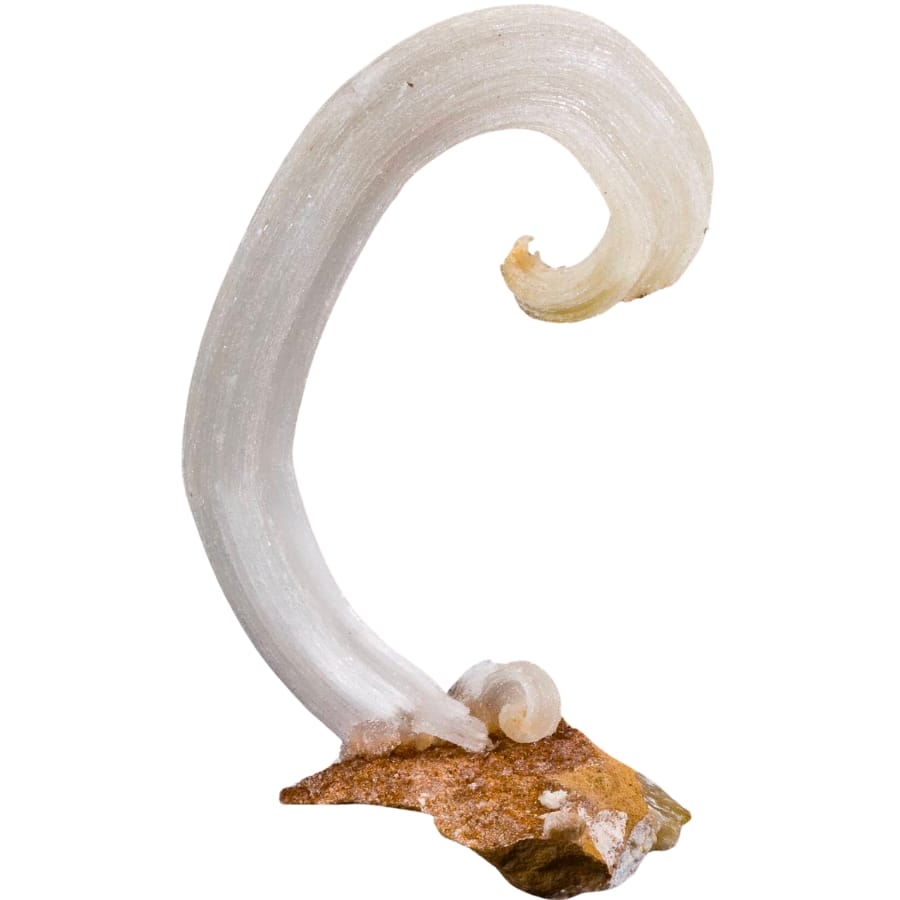
Selenite is typically clear or slightly opaque, and its long, flat, and often sword-like crystals can look like frozen light.
Imagine holding a piece of the moon’s glow right in your hands— that’s what holding it feels like. It forms from evaporating saline waters, where the calcium sulfate in the water becomes gypsum. Under the right conditions, it grows into selenite.
This gypsum type is used in making plaster and drywall. Because it’s so transparent, it’s even used in window panes in some special cases.
The value of selenite comes from both its beauty and its versatility. Despite its delicate appearance, it can bend slightly, thanks to its fibrous structure. This flexibility is unusual among minerals, making it even more fascinating.
Where you can find selenite
Selenite loves hanging out in places where saltwater evaporates, leaving behind its glistening crystals. You’ll find it in salt flats, hot springs, and areas with limestone caves, where it grows in peace.
You can find it in the famous caves of Naica in Mexico. But if you’re exploring closer to home, check out Oklahoma’s Great Salt Plains. Other USA spots include parts of California and New Mexico.
DON'T MISS OUT ON ANY GREAT FINDS!
While you're out searching you're going to find A LOT of other interesting rocks and minerals along the way. The last thing you want to do is toss out something really interesting or valuable. It can be easy to misidentify things without a little guidance.
You absolutely need a good reference guide in order to understand what you're looking at!
We've put together a fantastic field guide that makes identifying 140 of the most interesting and valuable rocks and minerals you will find REALLY EASY. It's simple to use, really durable, and will allow you to identify just about any rock and mineral you come across. Make sure you bring it along on your hunt!
Now, back to the identification specifics:
Alabaster
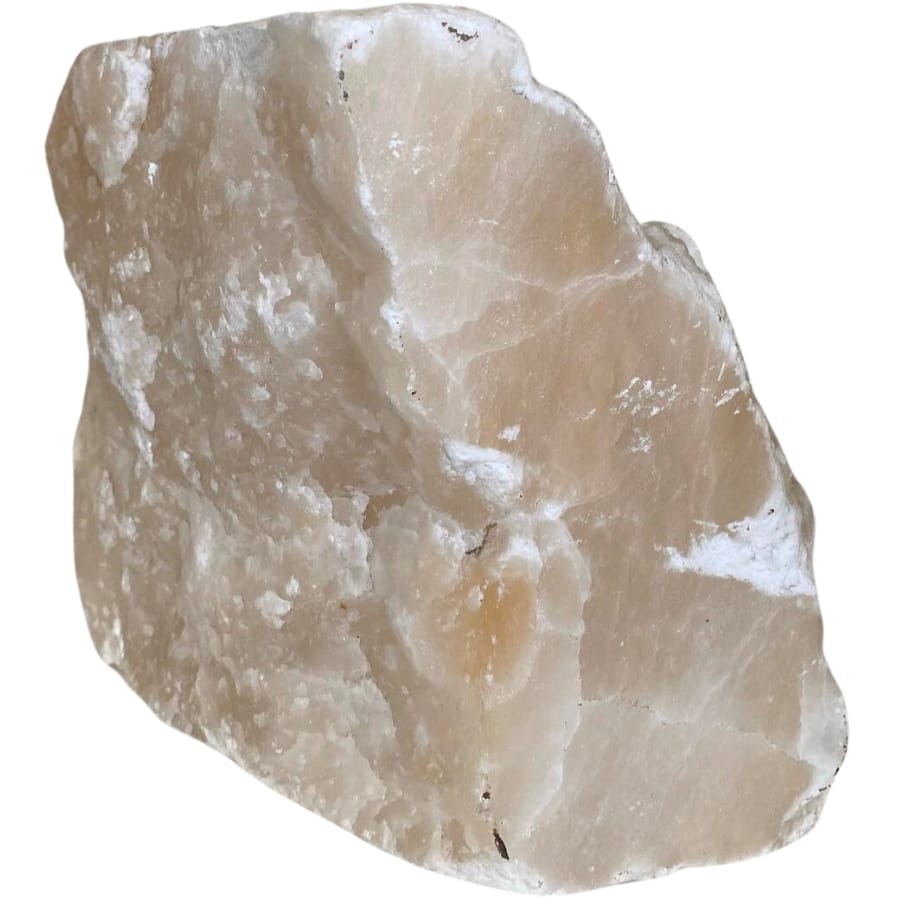
Alabaster stands out with its smooth, translucent look and soft feel. It’s so delicate and smooth that light can pass through it. It forms from gypsum or calcite growing slowly in layers, which gives it that unique, creamy texture that’s so easy to carve.
It can be pure white, which is popular for sculptures and art, or it can have shades of pink, orange, and even green.
Artists and sculptors have loved alabaster for thousands of years because it’s soft enough to carve into intricate shapes but hard enough to last for ages. Ancient cultures used it to make vases, statues, and windows for churches and palaces.
Some cultures even believed alabaster could preserve things better; that’s why they used it as containers to keep their precious oils and perfumes.
Where you can find alabaster
You can find alabaster in many parts of the world, including Italy and Spain, where it’s been used for centuries to create stunning artworks. In the USA, the states of Utah and Colorado are known for their alabaster deposits.
Satin Spar
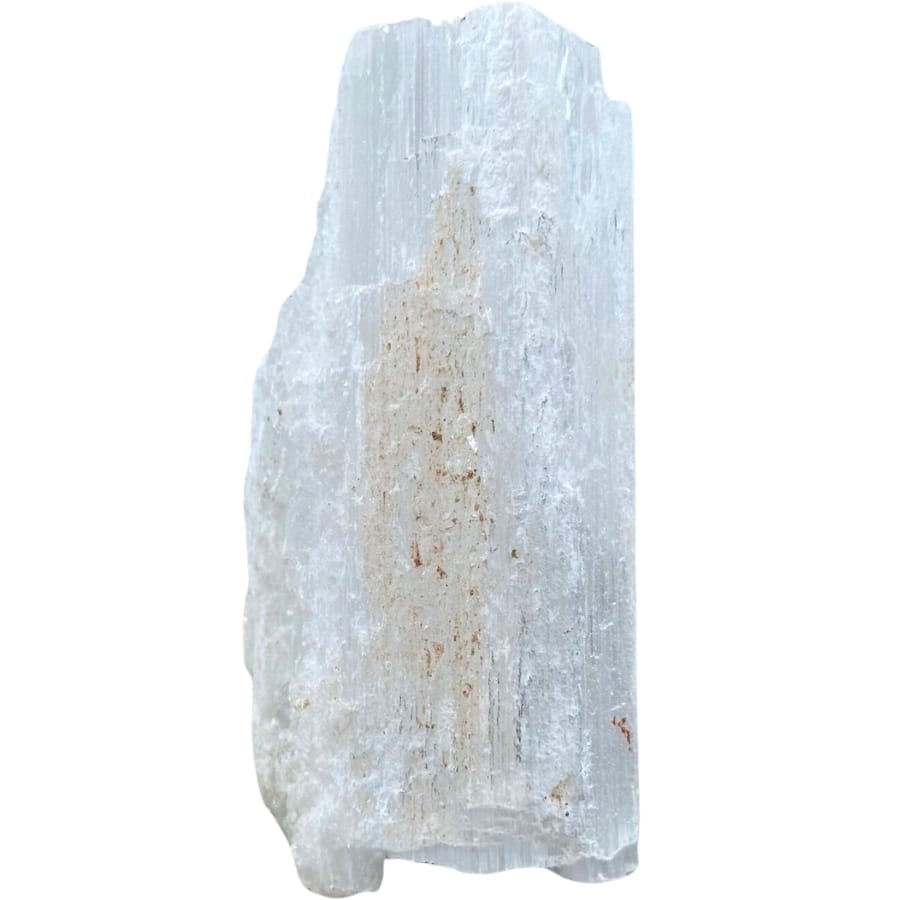
Satin spar has a silky, lustrous sheen that resembles satin fabric. This special shine comes from its fibrous crystal structure, which scatters light in a way that makes it look almost like it’s glowing from within.
As a type of gypsum, it grows from calcium sulfate and water coming together, usually in places where salty water evaporates.
Besides its awesome appearance, it also has a unique feel to the touch. Running your fingers over a satin spar is like touching silk or satin. This tactile quality is pretty neat coming from a rock.
It’s been used in everything from jewelry to home decorations. Because of its fibrous nature, it can also be carved into beautiful shapes and objects, making it a popular choice for artisan crafts and decorative items.
Where you can find satin spar
Satin spar is usually found in salty lakes and seas that have dried up a long time ago. In the USA, you can find this shiny mineral in Oklahoma, where it adds a bit of sparkle to the Great Salt Plains.
It’s also found in parts of Michigan, making the Great Lakes region another hotspot for satin spar fans.
Rock Gypsum
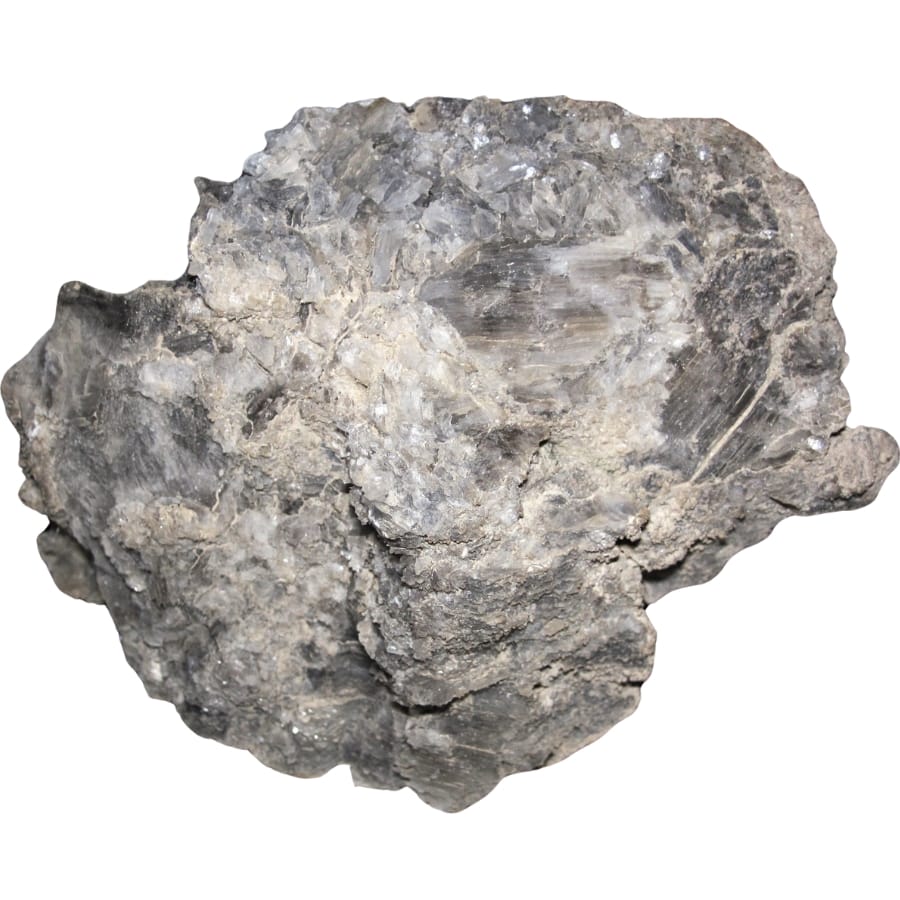
Rock gypsum is so soft you can scratch it with just your fingernail. It usually comes in white or light colors, and it has a kind of chalky feel to it.
This type of gypsum is made up of layers that can tell us stories about how water levels changed thousands of years ago. It’s distinct because not many rocks form in this layered way.
Rock gypsum is used to make plaster and drywall, which pretty much every building you go into is made of. It’s also important in making cement and as a soil conditioner in agriculture, helping plants grow better.
Because it’s so soft, artists back in the day used it to make detailed carvings and sculptures. Plus, it’s even used in making toothpaste! How cool is that?
Where you can find rock gypsum
Think of large, dry areas like deserts or ancient seabeds that have dried up over thousands of years. In these spots, rock gypsum forms big, impressive layers that can go on for miles.
In the USA, you’ll find it in states like Texas, Oklahoma, and New Mexico. These areas have the perfect conditions for creating rock gypsum.
Desert Rose
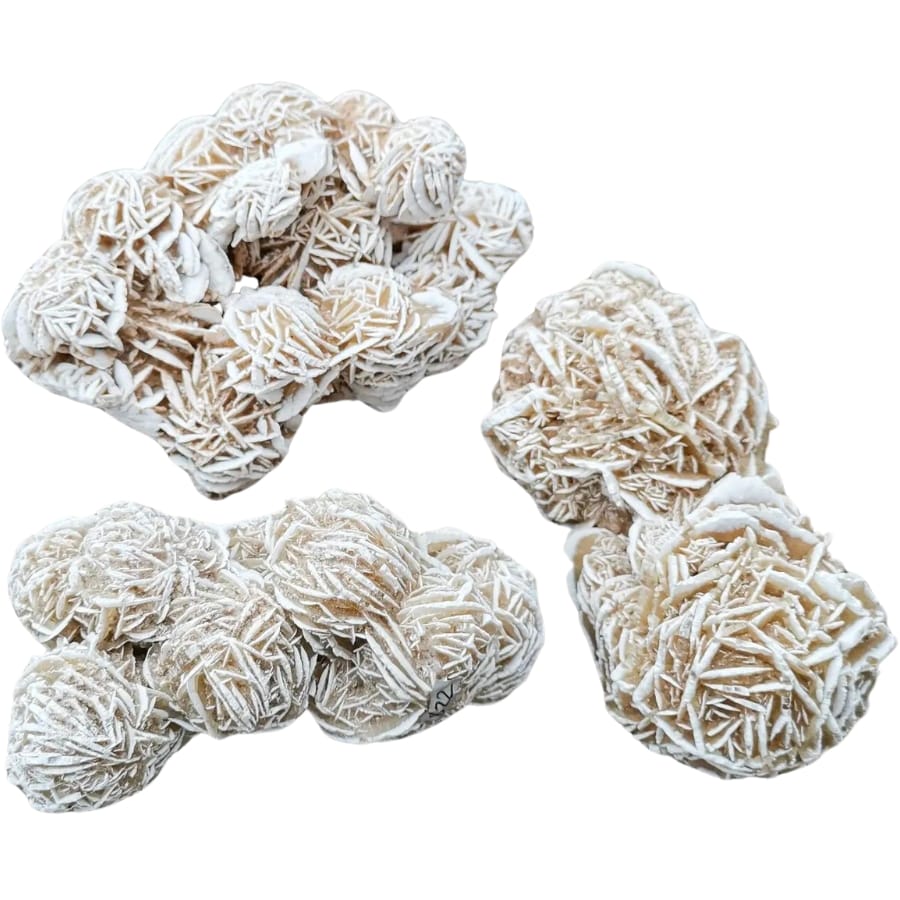
The desert rose is like a natural sculpture created with just sand, water, and minerals.
It looks like a rose blooming right out of the ground, with petals made of crystal instead of soft flower parts. These “petals” are actually sharp, shiny crystals that form in a circular pattern.
Desert roses form in dry, sandy places where water evaporates quickly. The water leaves behind gypsum or barite. They can form with sand trapped inside, giving it a sandy, earthy look while still sparkling in the sunlight.
Amazingly, no two desert roses are exactly alike. Just like real roses, each one has its own shape, size, and pattern of “petals.”
Where you can find desert rose
Desert roses thrive in dry, sandy places. You’ll find these unique formations in desert regions where minerals like gypsum can crystallize easily.
In the USA, they’re commonly found in Oklahoma and California. These areas have the kind of soil and climate that help desert roses bloom into their distinct shapes.
Gypsum Flower
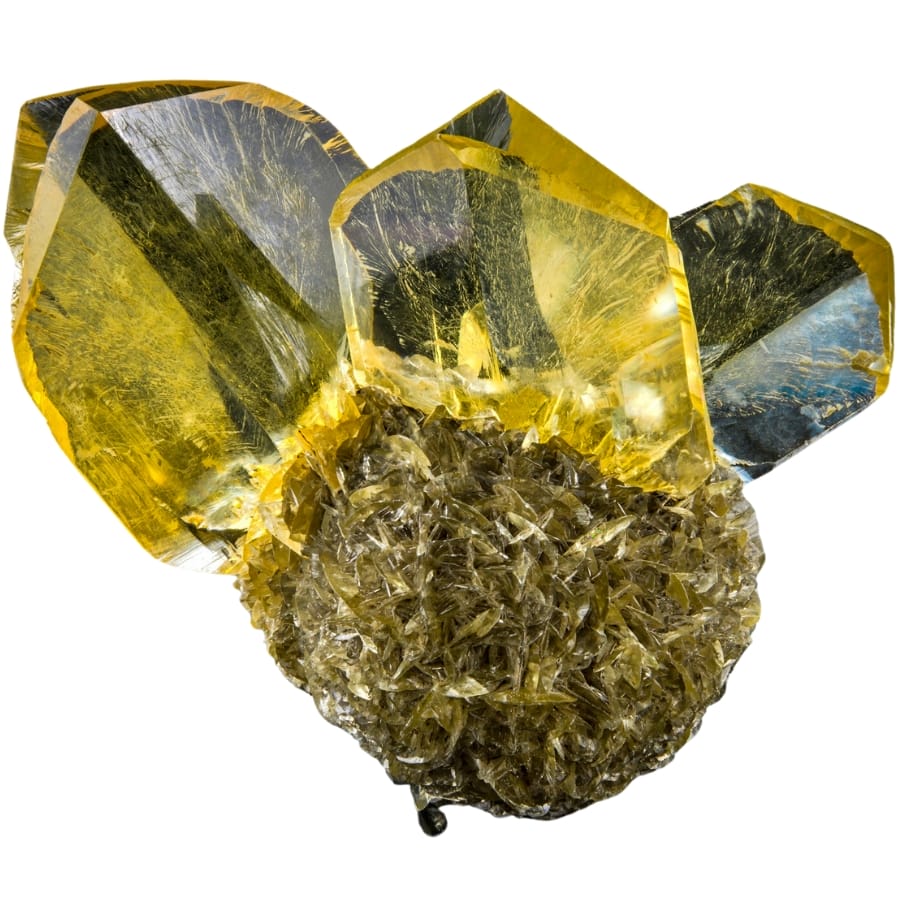
Gypsum flowers grow in ways that seriously look like flowers made out of crystal. These formations are super detailed, with each “petal” being a crystal that comes together to create something that looks just like a blooming flower.
They form in places where gypsum gets a chance to evaporate from water and then re-crystallizes, making these delicate, flower-like shapes.
Gypsum flowers are valued for their beauty. They’re like a snapshot of a moment in nature, frozen in time for us to see. The detail and delicacy of these formations show how even something as simple as water and minerals can create real beauty.
While they may look fragile, they’re pretty tough. They have to be, to survive the conditions they grow in.
Where you can find gypsum flower
Gypsum flowers are usually found in caves or old mines, such as New Mexico, Texas, and Oklahoma in the USA.
Fishtail Gypsum
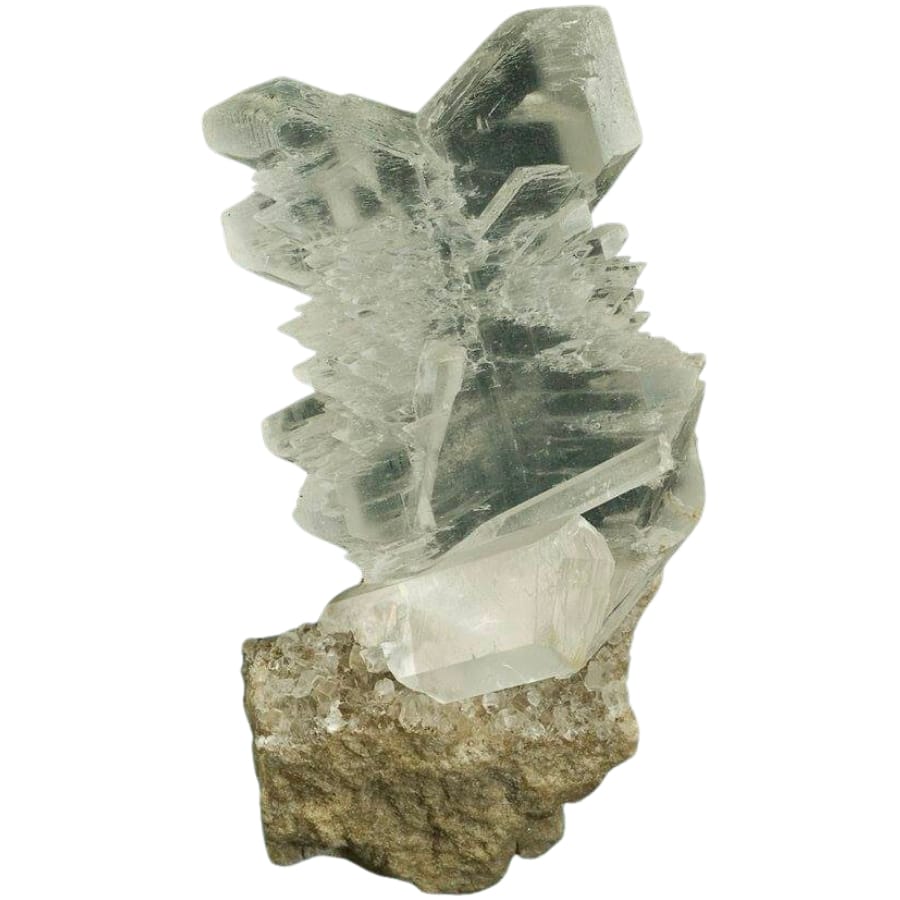
Fishtail gypsum has a unique pattern that resembles the tail of a fish. This happens because the gypsum crystals grow in a way that they split and fan out into two directions, creating a shape that’s a lot like a fishtail.
What adds to its unique look is its crystal clear or slightly cloudy appearance. It forms in environments where gypsum can crystallize slowly, letting those unique fishtail shapes come to life.
People value fishtail gypsum for a few reasons. First off, it’s just beautiful to look at. The way the crystals split and fan out can catch the light in amazing ways, making it a favorite for those who love natural art.
Despite looking delicate, it’s quite sturdy and can last a long time if taken care of properly.
Where you can find fishtail gypsum
In the USA, you can find fishtail gypsum in dry, desert areas where minerals have the space and time to form properly. States like New Mexico and Nevada are known for their mineral-rich lands where it can grow.

